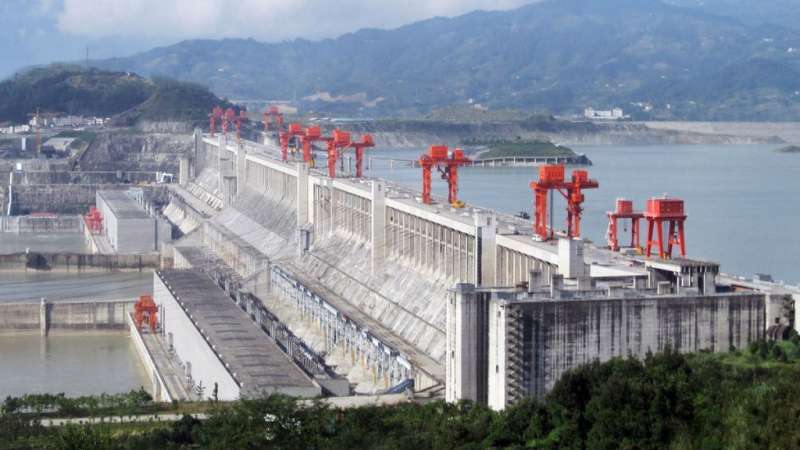China’s Three Gorges Reservoir, pictured above and located on the Yangtze River, introduced hydroelectricity—and a new suite of geohazards. The ancient Outang landslide on the reservoir’s slopes is a new test site for subsurface monitoring that provides real-time data on the causes and triggers of reservoir landslides. Credit: Le Grand Portage/Wikimedia, CC BY 2.0
Reservoirs provide water storage, hydropower, and recreation for local communities. However, adding a reservoir significantly changes a landscape's geological conditions and ushers in new and unpredictable hazards—most notably, landslides. Understanding the factors that drive reservoir landslides is paramount to maintaining reservoir infrastructure and public safety.
In a new study, Ye et al introduce a new fiber-optic nerve system (FONS) to monitor and study reservoir slides. The authors designed, implemented, and installed their FONS to monitor the ancient Outang landslide in China's Three Gorges Reservoir region, which has a volume exceeding 117 million cubic yards (90 million cubic meters) and migrates between 4 and 20 inches per year (100–500 millimeters). The system provides real-time, high spatial resolution data at the centimeter scale.
The setup deploys separate fiber-optic cables for each monitored variable—subsurface temperature, moisture, and strain. The sensors are bundled into a 4-inch (110-millimeter) borehole extending more than 131 feet (40 meters) below the surface. After installation, the array wirelessly transmits metrics on subsurface conditions to a data server at the surface, which allows the researchers to monitor landslide kinematics, hydrological transport, and sediment retention.
With data from the FONS, the authors confirmed the rear slope's main and secondary slip surfaces. In addition, they determined that short, high-intensity rains had a more significant effect on landslide mechanics than steady rains that dropped the same amount of moisture on the surface. This finding contradicted the hypothesized relationship between rainfall and landslide movement.
The new system opens possibilities for integrated hazard monitoring. The underground detection system offers critical insights into reservoir landslides' thermohydromechanical causes, triggers, and mechanisms. Future applications could combine satellite, aerial, and surface sensors to comprehensively look at geohazards.
More information: Xiao Ye et al, Subsurface Multi‐Physical Monitoring of a Reservoir Landslide With the Fiber‐Optic Nerve System, Geophysical Research Letters (2022). DOI: 10.1029/2022GL098211
Journal information: Geophysical Research Letters
Provided by American Geophysical Union
This story is republished courtesy of Eos, hosted by the American Geophysical Union. Read the original storyhere.
























